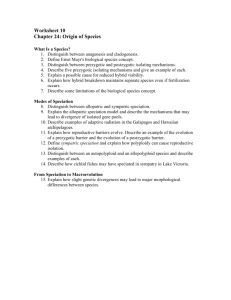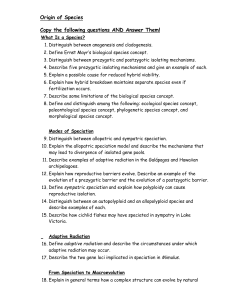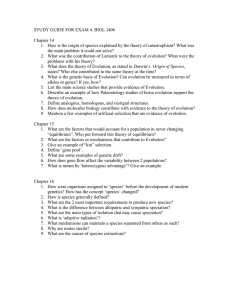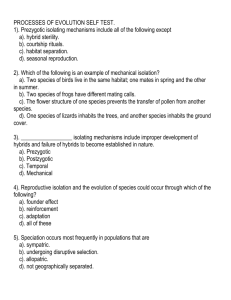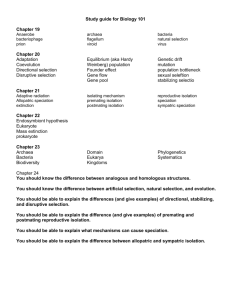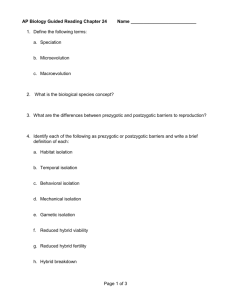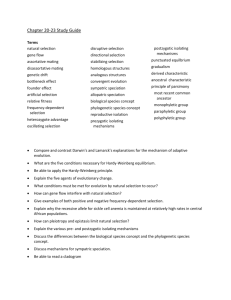Chapter 24 - Cloudfront.net
advertisement
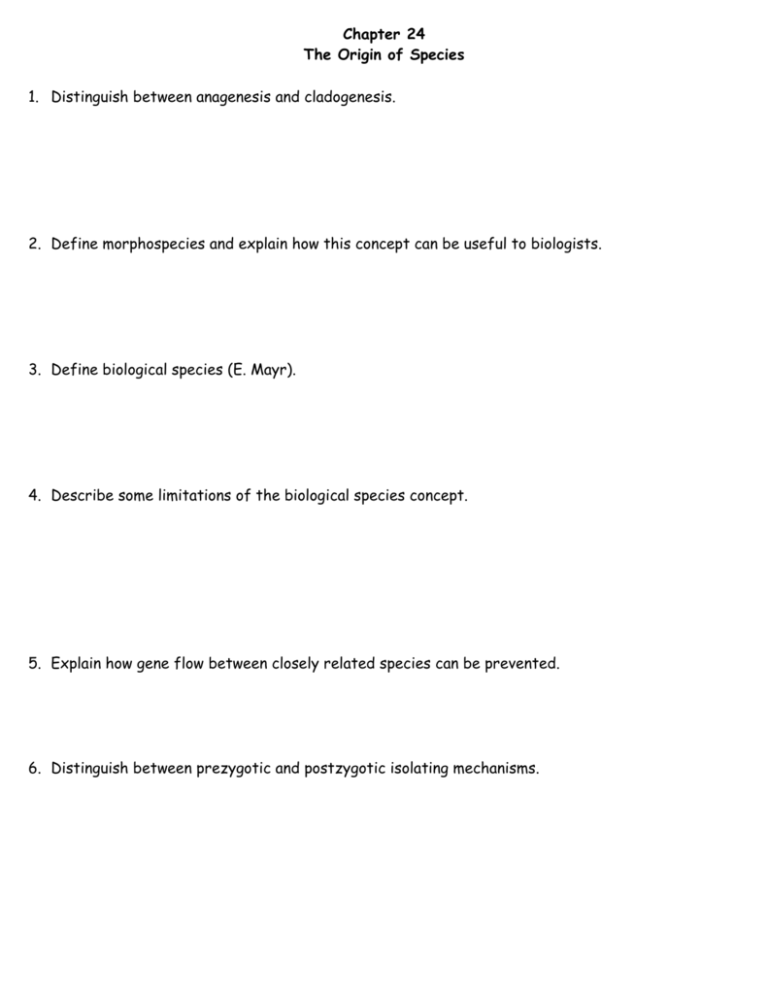
Chapter 24 The Origin of Species 1. Distinguish between anagenesis and cladogenesis. 2. Define morphospecies and explain how this concept can be useful to biologists. 3. Define biological species (E. Mayr). 4. Describe some limitations of the biological species concept. 5. Explain how gene flow between closely related species can be prevented. 6. Distinguish between prezygotic and postzygotic isolating mechanisms. 7. Describe five prezygotic isolating mechanisms and give an example of each. 8. Explain why many hybrids are sterile. 9. Explain in your own words how hybrid breakdown maintains separate species even if gene flow occurs. 10. Distinguish between allopatric and sympatric speciation. 11. Explain, in your own words, the allopatric speciation model and describe the role of intraspecific variation and geographical isolation. 12. Explain why peripheral isolates are susceptible if geographic barriers arise. 13. Describe the adaptive radiation model and use it to describe how it might be possible to have many sympatric closely related species even if geographic isolation is necessary for them to evolve. 14. Define sympatric speciation and explain how polyploidy can cause reproductive isolation. 15. Distinguish between autopolyploidy and allopolyploidy. 16. List some points of agreement and disagreement between the two schools of thought about the tempo of speciation (gradualism vs. punctuated equilibrium). 17. Describe the origins of evolutionary novelty. 18. Do the self-quiz on page 482 (1-16).
